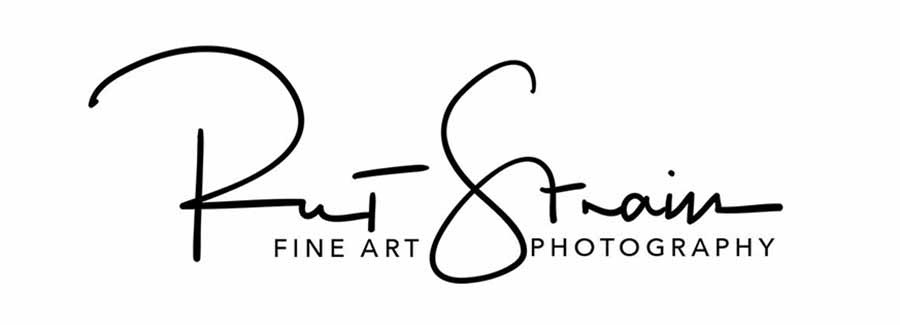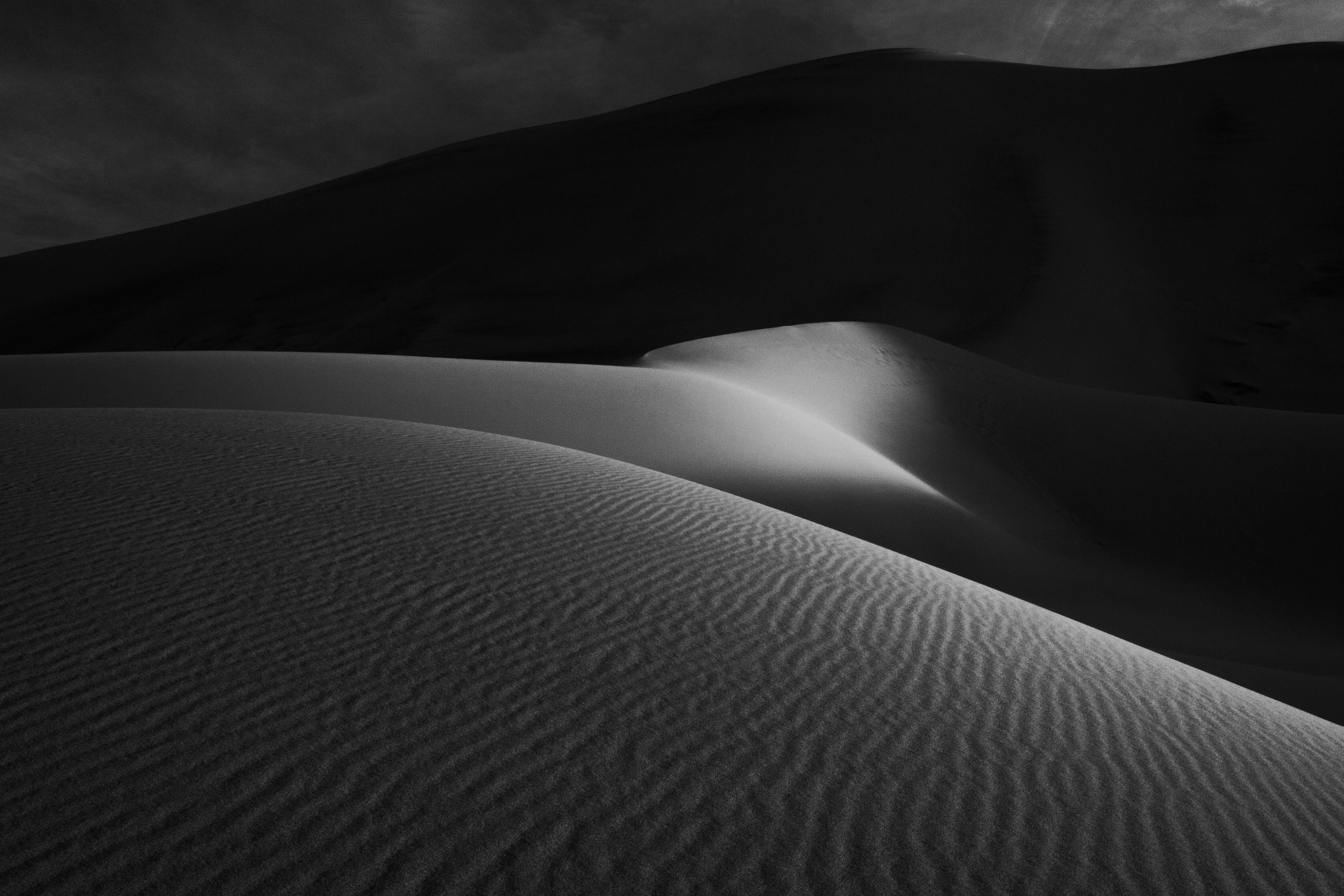Leading Light
Our eye is drawn to light. Take a look at the work of the Renaissance masters to see how they have used light to draw you into their paintings. In the more recent landscape painting by Albert Bierstadt shown below, light plays a major role in getting us through the many subjects of the piece. Examine the painting and describe the areas where light (or brightness) plays a major role. Once you have done that, review my notes about the marked up painting that follows.
While we may initially see the hazy monoloith in the center, as we examine the painting, our eye normally starts in the foreground, most often for us westerners in the lower left. The bright bare ground leads us past a boulder then we turn back left to discover a woman accompanied on the rocky prominence by a party of men. Her gaze takes us into the painting where we discover a canoe and the sunlit rock face. Less prominent light leads us from the lower center to the across the grass three horses, then continues into the forest. On the way, we can’t help but pause at the gnarly tree. Perhaps on our second go around we will notice that the light on the right side of the tree somewhat mimics the shape of the most prominent light on the monolith (pink line). The brightest light in the entire painting is a reflection in the water which is there to make sure we don’t get stuck in the lower third of the painting. It takes us to the background where we see the main source of light on the monolith coming from the clouds on the upper right. It may only then be that we discover the canoe in the darker lower left corner. Be sure to notice the minimum amount of distractions on the edge of the painting, where Bierstadt has made sure there is darkness that does not let us out. We must keep looking, a second and maybe even a third time.
It is pretty difficult for a photographer to do what a painter can do. We can’t just create scenes. But we can work with scenes presented to us and take advantage of the same principles that Bierstadt, Moran and other famous western painters employed. Not only can light be used the same way in photography, you would do well to work on your use of light to draw the viewer into your images.
As you develop more talent in your growth as a photograph, you will learn to see this light before you capture an image. Take a look at this image below. I specifically was looking for light in the middle of the frame with dark areas to the outside. This is not as easy as it sounds on sand dunes or anywhere else for that matter.You may even anticipate the light as was the case in this image, then wait for it. When you see it, you will want to capture it.
The remainder of this article is about helping to improve the light in your image with post processing so that it leads the viewer through the image to the subject(s). I will use files without the light added, show you where I have added or subtracted light and then show the result. This should give you some idea of what you can do in post processing.
First, a couple of terms you may be familiar with, but can be really confusing. These words are “dodge” and “burn”. Dodge originally came from keeping photographic print paper from being hit by the light of an enlarger. That mean less exposure on the paper, which meant a lighter picture. The negative film used is clear in areas that will be black on the print paper, so lots of light goes through the film and that makes the silver on the paper turn black. Removing light (dodging) means less black on the print. Burning means more light which makes the print darker. If it helps, think of concentrating light with a magnifying glass onto a piece of paper to char it. Since we aren’t using enlargers and developer, it’s easiest to think of burn as darker (like burned wood) and dodge as lighter (like something missing) or the opposite of burning.
Let’s get started with the examples:
This first image is all about light. There is really no subject other than the light and the sensuous curves created by the light and shadows on the dunes. Notice that the light is concentrated in the middle and the borders are dark. Compare the black and white image to the color image. The fact that the black and white version stands up well confirms that the light and its form is the subject. The black and white version really helps us see where the light is. Try looking at your images in black and white as you process them as an aid to knowing where you might want more or less light.
The next image is also of sand dunes. Here we have a subject or two. The RAW images are usually rather flat. But the lighting was flat as well, having been taken in high winds with a lot of suspended sand in the air. Light had to be developed for the scene to work. Although the lines are very attractive, they did not provide a nice movement through the image. A number of isolated masks were applied (Radial Filters in Adobe Camera Raw) to develop the progressive lines. Such adjustments are best made a small amount at a time and with well feathered edges.
This next image was used in the article on Creating Depth. In addition to areas of selective focus, notice how light, color and lines all work together to move our eye around in the image. Starting with the knobby knees on the bald cypress (front left), we then move to the trees on the right whose light and limbs bring us back to the larger tree. The light in the background makes sure that we don’t just stay with the two front trees. It actually sets the mood. To help keep our eye on the subject, the image was cropped, distracting features were removed and areas were darkened along the borders. Note how our eyes are drawn away from the cooler shadows into areas that have been made brighter and warmer.
Scenes such as this one can easily get too cluttered. Whereas Bierstadt could not add light or distractions, we remove features that don’t benefit the finished print, but only if we do not end up with a print that looks like it has been overworked. This is a much easier if we take care in our compositions and find fairly ideal light to begin with.
Have you noticed that all of the images shown above have more or less side-lighting? It is much easier to create depth and lead the viewer into the scene with side lighting. Front lighting or top front lighting (think middle of the day tourist shots) can be very contrasty and makes depth more of a challenge. Most landscape photographers prefer overcast days where lighting is rather flat and highlights can be added in post processing. It difficult to reduce contrast without ending up with an HDR look.
Backlit scenes can also be very contrasty, but at least the light source keeps brightness at the center of the image. When shooting these scenes be sure to take separate exposure for the back lit area and the shadows towards the foreground so details can be seen in those areas.
This article is about light and composition. I have often referred to creating light in the right areas in post processing. That requires some rather involved lessons and is best taught by tutorials that can be found on YouTube or are offered by a number of landscape photographers. Here is a pretty good one



